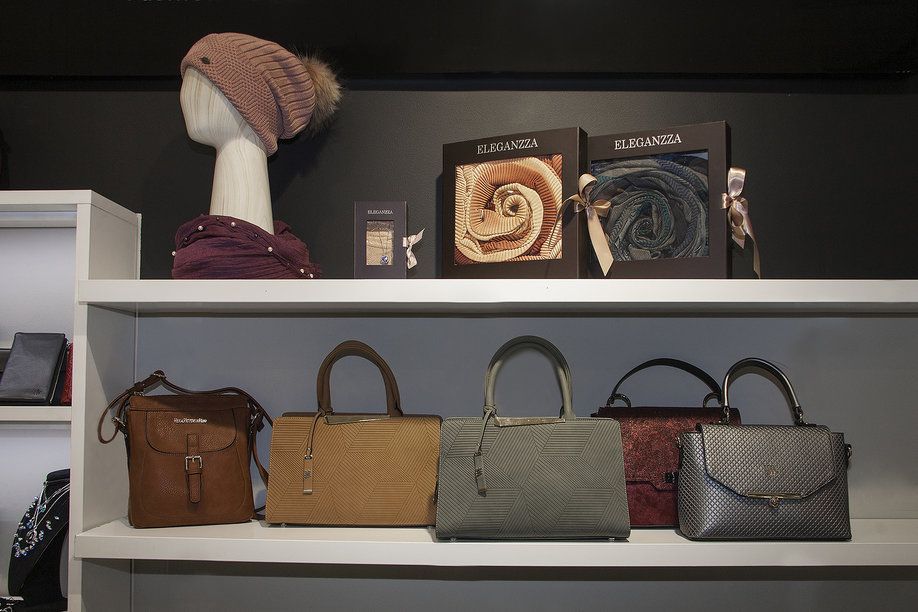 Open display of related products in Vera Victoria Vito store
Open display of related products in Vera Victoria Vito store
The place of "junction" in the trading floor. Pros and cons of open and closed display

Depending on the format of the store, related products may be allocated more or less space. Common options for laying out "jumble":
-
in a glass case;
-
behind the cash node;
-
open display on racks in the hall.
Each of these types has its advantages and disadvantages. The goods locked in the window are clearly visible, you can make the backlight and it will not be stolen. But you can’t pick it up, the seller must open the window to show something ...
If the goods are laid out in the hall, for example, on special racks, then they must be protected from theft, and this is additional equipment and expenses. Advantage: the buyer can pick up the product, read the label. Here the principle of self-service applies, prompting the buyer to act. In addition, the sales assistant can also immediately show the product and explain its capabilities.
The most common is the layout of the “junction” in the immediate vicinity of the cash register, often behind the cashier’s back. The buyer, standing at the checkout, has the opportunity to consider the goods laid out “in front of his nose”. If the buyer has not yet received recommendations from the seller to take something from the related product, then the cashier has the opportunity to offer him a suitable product. In addition, there is the opportunity here, near the ticket office, to lay out promotional materials on the “jut” or put a screen with a video about shoe cosmetics.

From emotional to rational
In addition to the right place, the calculation model itself also matters. We conditionally divided them into three: emotional, rational and “American”.
Emotional the layout can be found in small shoe networks, where there is a responsible employee who is constantly engaged in the selection and design of the “jut”. The product is laid out so as to attract attention, and is a kind of beautifully selected composition. Color and decoration play a big role. As a rule, this is a wide range of cosmetics with exotic products and a large palette of colors. With such a calculation, very good training of sellers is supposed, who, from all this variety, can offer the buyer what he needs.
Rational The layout is present in large networks where there is already a proven system of work, but the staff turnover here is usually high. Everything is set "on stream" here. The assortment must therefore be concise and clear, including only bestsellers and seasonal goods. Then it’s easy for sellers to remember everything, and it’s easy for buyers to figure it out.
"American" Display is when a lot of each product is displayed. The idea was borrowed from the system of displaying goods in supermarkets - a lot of goods were posted, because the demand is very large, and you need to keep stock. Thus, the buyer is encouraged to buy: everyone needs me too. This is usually a small, percussion, seasonal set of products. One product in large quantities can be exhibited on a separate podium near the outlet.
All three calculation methods have the right to life and can be freely combined.
Our laying out recommendations:
-
An open display in the checkout area (without a display case), the product should be located so that most of it is at the eye of the buyer.
-
The product must stand tight, with no free space between individual cylinders. Each product should have several cylinders / tubes, but not too many.
-
If in one group of goods - for example, in impregnations, there are cylinders of different heights, then it is better to put them "slide", while the highest or most important product is located in the middle.
- Tubes of creams are set to the front end so that the color is visible.
-
If this is a premium product, then seasonal, relevant products should be highlighted especially - there is no fantasy here: jars, tubes, cylinders can be in a stand / presenter, accompanied by an advertising poster, a mini-gift.
-
If the store has a place and it is technically possible, then open display of seasonal goods on the trading floor, on the podium or in a separate rack is also welcome.
Retailers are seeing an increase in the category of accessories.
Director of the Econika brand Alina Stepanova:
“The development of a line of accessories is one of the strategic objectives of the Econika brand. It is based on the goal of improving the customer experience through the ability to choose a stylish image, be inspired to change, find an individual fashion solution for a specific occasion or occasion. First of all, we study the needs of clients, their lifestyle, style and preferences. Interpreting fashion trends and taking into account the knowledge of the client, we develop unique themes that are reflected in capsules, which include shoes, bags, accessories, jewelry. Using this approach, we have successful sales of bags and accessories, increasing their share annually by 30-40%. Over the next few years, we plan to continue strengthening this category with exclusive designs and limited edition capsules. "
Vera Victoria Vito Network Advertising and Marketing Director Larisa Vovdenko:
“We have scarves, wallets, belts, bracelets, umbrellas in our stores. Sales of accessories are growing, purses are especially active. Before the New Year a new batch of ceramic bracelets and rings arrived, and they immediately showed a good sales result, especially since they appeared in our stores during the very season of gifts. ”
 Open display of accessories in the Vera Victoria Vito store
Open display of accessories in the Vera Victoria Vito store Accessories booth at Vera Victoria Vito store
Accessories booth at Vera Victoria Vito store
High sales of shoe cosmetics - in the hands of sellers
The sale of related products is entirely dependent on the seller’s skills. Associated goods are not for sale. A buyer may come to a shoe store with the firm intention to buy a pair of shoes, but he never comes with the intention of buying a tube of cream. The main task of the seller is to see and correctly evaluate the buyer, while the seller should be as honest and unobtrusive as possible. Of course, he is interested in selling as many goods as possible, but he should offer only what the buyer really needs, in no case to “push in” the goods.
The Russian buyer combines a high degree of mistrust and at the same time is a grateful, responsive audience if he feels a good attitude towards him. The sincerity of the seller will be appreciated and the buyer will come next time for advice.
Of course, the seller must have information on all the goods, but in practice, we see that often the seller has his favorite products that he offers in the first place. Sellers come up with their own stories and argue why the buyer should purchase these products. There is nothing wrong with it, on the contrary, if these products are offered correctly, then when training you need to ask sellers what products they like and give more information about them. The seller must be sure of the product himself, then he will be able to successfully offer it.
Before the start of the season, sellers need to submit a short line of seasonal shoe care products that will be “shocking.” It should not be long, otherwise it will be difficult for the seller to remember all the advantages of each tool. For example, if it is an impregnation - no more than three: gentle impregnation with the care function in the 200 ml cylinder, nano-impregnation of strong action in the 400 ml cylinder, concentrate impregnation in the 75 ml cylinder.
Sellers should understand the types of leather so as not to make a mistake with the selection of products. If the store has a large turnover of sellers and it is not possible to constantly conduct training, then you can choose a certain line of universal goods (there are such funds on the market) that can be used for all types of leathers. For example, modern high-end impregnations are developed absolutely for any materials, including TECH-membranes.
Five general rules for sellers:
-
Do not impose a product, but talk about its merits.
-
So offer a product so that a person picks it up.
-
Offer two products to choose from - usually one of them will be purchased. But no more: a person has only two hands.
-
Offer a care product at the end of the conversation, when the buyer decided to buy shoes.
-
Articulate product benefits clearly, concisely, and clearly.

How to form a "cosmetic" assortment
What brand of shoe cosmetics to choose? Here it makes sense to build on those shoe brands that are presented in the store.
If this is a cheap product, then the means for shoes can not be expensive. In addition, in a store of a low price segment, it makes no sense to present a large assortment. One impregnation, one cleaning agent, a cream in three primary colors, a velor-nubuck spray in three primary colors, a pair of brushes are enough! Sometimes they add fat for shoes or a very cheap cream in a jar.
In the middle segment and above, a wide range of products can be presented, allowing to satisfy more refined demand. Creams and products for velor-nubuck leather in a wide range of colors, a large selection of cleaning products, impregnations, various brushes, special products for varnish or synthetic materials, stretch marks for problem areas in shoes, products for delicate leather or leather with effects must be present here and much more. Of course, the emphasis is still on commercial products, but if the seller sees that the girl bought very expensive shoes made of genuine patent leather, then maybe she should not offer ordinary cream for varnish, but special oil for varnish, which will protect the leather more effectively from creases. Oil, of course, costs a little more, but there is certainly a point in using just such a product, in which the seller should try to convince the buyer.
Those who have no experience selling shoe cosmetics are encouraged to start with the so-called starter kit of win-win products, and then gradually expand the assortment based on sales experience.
How to correctly calculate the volume of procurement
If we consider only shoe cosmetics without any other “bundle” - insoles, laces, horns, shoe holders and other things, then to an average store with an area of 100 sq. m, selling shoes with retail prices from 4 000 rubles to 12 000 rubles, in the low season, shoe cosmetics will cost approximately 40 000 rubles a month at purchase prices. This, of course, is a very average figure. We have already talked about how many factors matter when selecting an assortment.
There are no general recipes, here we must act by trial and error, while hoping that the latter will not be very many. It can be calculated differently: just take the approximately average volume of shoe sales per month, take 10% from it, divide by 2 (we get the wholesale price) and multiply by 3, since there will be the very first purchase - if you start selling shoe cosmetics from scratch , - and it should contain some stock of goods.
Do I need to arrange sales of creams and sprays?
As practice shows, sales of cosmetics do not make sense. With shoes, everything is different: the buyer clearly understands how much this or that shoe can cost and sometimes he is specially waiting for a sale. Or the buyer sees a substantial discount and is tempted to make a spontaneous purchase, even if he does not really need these shoes at the moment, because "it’s a sin not to buy at such a price."
In the case of shoe cosmetics, no one will buy the cream just because it has a special offer and there is a 20% discount. If the seller managed to convince the buyer that he needed a specific tool, he would buy it without a discount.
To offer a care product as a gift during the campaign in addition to shoes is a possible option, but in this case, the present should be chosen so that the buyer can really use it. Such a present should be inexpensive and universal, not requiring consultation on its use. For example, an impregnated sponge is suitable for such purposes to add shine to the shoes. The buyer, of course, will not refuse the presentation, but he still with great pleasure wants to get just a discount on shoes, not a gift. Of course, you can carry out such actions, but this is not the main task of care products. They can be well sold in regular trading.
This article was published in the 131 issue of the print version of the magazine.
| Please rate the article |
Materials on the topic
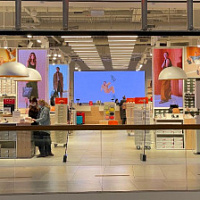
Should a shoe store spend money on digital screens?
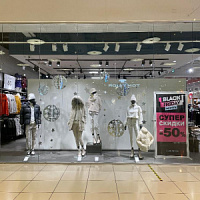
Mistakes in the lighting of the sales area that spoil the impression of a shoe store
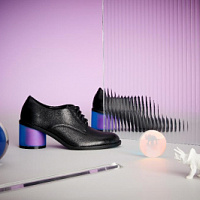
Technical aspects of display space and current trends in its design
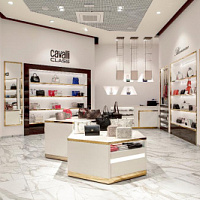
Design rules for a shoe and accessories store
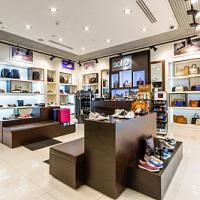
Pandemic-influenced visual merchandising transformation for shoe and accessories store
Popular
 Coach turned to Big Data analysis and won the interest of a young audience
American handbag brand Coach has planned the success of its Tabby model among a younger audience, Generation Z, by turning to big data analysis, abandoning traditional and analogue tools, such as human intuition or the ability of any executive to sense “which way the wind will blow,” writes B.O.F.
Coach turned to Big Data analysis and won the interest of a young audience
American handbag brand Coach has planned the success of its Tabby model among a younger audience, Generation Z, by turning to big data analysis, abandoning traditional and analogue tools, such as human intuition or the ability of any executive to sense “which way the wind will blow,” writes B.O.F.
 IDOL updates the concept
The IDOL brand, part of the Melon Fashion Group portfolio, opened the first flagship in an updated concept in the Aviapark shopping center in Moscow.
IDOL updates the concept
The IDOL brand, part of the Melon Fashion Group portfolio, opened the first flagship in an updated concept in the Aviapark shopping center in Moscow.
 Seven “sins” of the shoe business. How do owners harm the company with their own hands?
Why is Company X able to create a strong, profitable brand, but Company Y is struggling to make ends meet? Many people prefer to attribute success to luck, luck, or the support of strong patrons. And few people ask themselves the question: “What am I doing wrong?” Moreover, many entrepreneurs begin to harm their business from the first day of its opening. In this article, together with SR expert in the field of fashion business management and development, Maria Gerasimenko, we will look at the 7 main “sins” that business owners commit using specific examples.
Seven “sins” of the shoe business. How do owners harm the company with their own hands?
Why is Company X able to create a strong, profitable brand, but Company Y is struggling to make ends meet? Many people prefer to attribute success to luck, luck, or the support of strong patrons. And few people ask themselves the question: “What am I doing wrong?” Moreover, many entrepreneurs begin to harm their business from the first day of its opening. In this article, together with SR expert in the field of fashion business management and development, Maria Gerasimenko, we will look at the 7 main “sins” that business owners commit using specific examples.
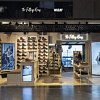 Current techniques in lighting a shoe store
Today, walking through the galleries of shopping centers, we see a variety of formats of offline stores. New concepts of retail spaces attract with an individual, memorable design. In a certain sense, they are an element of the show, a tool through which the buyer receives a new and interesting experience. Together with SR expert in the field of lighting technology in retail, Tatyana Ryzhova, we will look at current lighting design techniques for modern shoe stores, which we will see more and more often in new retail outlets in the near future.
Current techniques in lighting a shoe store
Today, walking through the galleries of shopping centers, we see a variety of formats of offline stores. New concepts of retail spaces attract with an individual, memorable design. In a certain sense, they are an element of the show, a tool through which the buyer receives a new and interesting experience. Together with SR expert in the field of lighting technology in retail, Tatyana Ryzhova, we will look at current lighting design techniques for modern shoe stores, which we will see more and more often in new retail outlets in the near future.
 Louis Vuitton opens a new factory in Italy
Louis Vuitton has opened its second shoe factory in Italy. After opening the first one in Fiesso d'Artico in Veneto, the LVMH flagship brand has just opened a new production site dedicated to this category of footwear in the industrial zone of Civitano in the Marche region. There is also another brand production facility in Tuscany, where bags and leather accessories are produced, writes fr.fashionnetwork.com.
Louis Vuitton opens a new factory in Italy
Louis Vuitton has opened its second shoe factory in Italy. After opening the first one in Fiesso d'Artico in Veneto, the LVMH flagship brand has just opened a new production site dedicated to this category of footwear in the industrial zone of Civitano in the Marche region. There is also another brand production facility in Tuscany, where bags and leather accessories are produced, writes fr.fashionnetwork.com.
 The Euro Shoes@CAF exhibition will be held in Almaty
From March 11 to 13, the Euro Shoes@CAF (Central Asia Fashion) exhibition will be held in Almaty at the Atakent exhibition complex. The exhibition, which is the largest international event in the fashion industry in Central Asia, will present collections of clothing, shoes and accessories.
The Euro Shoes@CAF exhibition will be held in Almaty
From March 11 to 13, the Euro Shoes@CAF (Central Asia Fashion) exhibition will be held in Almaty at the Atakent exhibition complex. The exhibition, which is the largest international event in the fashion industry in Central Asia, will present collections of clothing, shoes and accessories.
 Euro Shoes will start operating on February 19 in Moscow!
The winter session of the international exhibition of footwear and accessories Euro Shoes premiere collection will be held in Moscow at the Expocenter from February 19 to 22. The organizers promise the presence of all the main participants at the exhibition, as well as new names from Europe, Asia and Russia.
Euro Shoes will start operating on February 19 in Moscow!
The winter session of the international exhibition of footwear and accessories Euro Shoes premiere collection will be held in Moscow at the Expocenter from February 19 to 22. The organizers promise the presence of all the main participants at the exhibition, as well as new names from Europe, Asia and Russia.
 American buyers couldn't buy Birkin bags and sued Hermès
French fashion house Hermès is facing a lawsuit in California from two customers who were unable to purchase exclusive Birkin bags. The fashion house is accused of unfair commercial practices.
American buyers couldn't buy Birkin bags and sued Hermès
French fashion house Hermès is facing a lawsuit in California from two customers who were unable to purchase exclusive Birkin bags. The fashion house is accused of unfair commercial practices.
 Why Rendez-Vous and Yandex Lavka released a “bread bag”
Shoe retailer Rendez-Vous announced the launch of a spring collaboration with Yandex Lavka and released a roll that resembles the shape of a woman’s handbag. This “Bread Bag” is presented in the Yandex.Lavka application at a price of 249 rubles. On the product packaging there is a promotional code for 1000 rubles, which can be spent in the Rendez-Vous network.
Why Rendez-Vous and Yandex Lavka released a “bread bag”
Shoe retailer Rendez-Vous announced the launch of a spring collaboration with Yandex Lavka and released a roll that resembles the shape of a woman’s handbag. This “Bread Bag” is presented in the Yandex.Lavka application at a price of 249 rubles. On the product packaging there is a promotional code for 1000 rubles, which can be spent in the Rendez-Vous network.
 Camper has released innovative sneakers - designers
Spanish brand Camper's new Roku sneaker features six interchangeable components to create up to 64 different looks and color combinations. Roku means "six" in Japanese.
Camper has released innovative sneakers - designers
Spanish brand Camper's new Roku sneaker features six interchangeable components to create up to 64 different looks and color combinations. Roku means "six" in Japanese.
 Christian Louboutin presented a collection in a cowboy style
At the Loubi Show in Paris, the French luxury brand Christian Louboutin presented its fall 2024 collection, following the trend - in the style of the Wild West. It included cowboy boots and rhinestone loafers.
Christian Louboutin presented a collection in a cowboy style
At the Loubi Show in Paris, the French luxury brand Christian Louboutin presented its fall 2024 collection, following the trend - in the style of the Wild West. It included cowboy boots and rhinestone loafers.
 Turkish brand Vaneda on Euro Shoes
Street style, sport, outdoor, military – the main style directions of footwear of the company from Turkey
Turkish brand Vaneda on Euro Shoes
Street style, sport, outdoor, military – the main style directions of footwear of the company from Turkey
 Fashion Week takes place in Moscow
Fashion Week takes place in the Russian capital. Events include fashion shows, markets where you can purchase clothes, bags and accessories, and a B2B Showroom for fashion industry professionals.
Fashion Week takes place in Moscow
Fashion Week takes place in the Russian capital. Events include fashion shows, markets where you can purchase clothes, bags and accessories, and a B2B Showroom for fashion industry professionals.
 We are ready for active development in the Russian market
Friedrich Naumann, CEO of the Tamaris brand, told Shoes Report about the company’s ambitious plans, business development in Russia and expansion of the retail network, and also shared details about new collections and launches.
We are ready for active development in the Russian market
Friedrich Naumann, CEO of the Tamaris brand, told Shoes Report about the company’s ambitious plans, business development in Russia and expansion of the retail network, and also shared details about new collections and launches.
 Fashion trends Fall-Winter 2023/24 for commercial footwear purchases
Permanent contributor to Shoes Report. Elena Vinogradova, an expert in sales and purchases in the fashion business, prepared an overview of the trends for the autumn-winter 2023/24 season especially for us.
Fashion trends Fall-Winter 2023/24 for commercial footwear purchases
Permanent contributor to Shoes Report. Elena Vinogradova, an expert in sales and purchases in the fashion business, prepared an overview of the trends for the autumn-winter 2023/24 season especially for us.
 MSCHF and Crocs launch "Big Yellow Boots"
Creator of the Big Red Boots, Brooklyn brand MSCHF has teamed up with American plastic clog and sandal brand Crocs for another oversized shoe. The new Big Yellow Boots will go on sale on August 9th.
MSCHF and Crocs launch "Big Yellow Boots"
Creator of the Big Red Boots, Brooklyn brand MSCHF has teamed up with American plastic clog and sandal brand Crocs for another oversized shoe. The new Big Yellow Boots will go on sale on August 9th.
 Five rules of professional lighting for a shoe store - something that is relevant in any season
When developing a lighting concept for shoe retailers, it is important to take into account not only the history of the brand, the architectural content of the premises, the target audience of the stores, but also the seasonality of the goods. With the onset of the cold season, client preferences change: bright weightless shoes are replaced by more massive models in discreet dark colors. Despite significant differences in summer and winter collections, the overall philosophy of the brand, its recognition should remain unchanged at any time of the year. Tatyana Ryzhova, an SR lighting expert in fashion retail, has identified five basic rules for a competent lighting concept for a shoe store for readers of the magazine, which will help to present winter assortment to customers in a winning way.
Five rules of professional lighting for a shoe store - something that is relevant in any season
When developing a lighting concept for shoe retailers, it is important to take into account not only the history of the brand, the architectural content of the premises, the target audience of the stores, but also the seasonality of the goods. With the onset of the cold season, client preferences change: bright weightless shoes are replaced by more massive models in discreet dark colors. Despite significant differences in summer and winter collections, the overall philosophy of the brand, its recognition should remain unchanged at any time of the year. Tatyana Ryzhova, an SR lighting expert in fashion retail, has identified five basic rules for a competent lighting concept for a shoe store for readers of the magazine, which will help to present winter assortment to customers in a winning way.
 I doubt and object: how to find an approach to difficult clients?
How good and serene would be the work of a salesperson if the customers were calm, cheerful, always knew exactly what they wanted, and bought, bought, bought! It is a pity that this is possible only in dreams. Therefore, we will not dream, but we will act. Together with Maria Gerasimenko, a permanent author of SR, we understand the doubts and objections of buyers and build a strategy for working with them. Our expert pays special attention to the two main objections of buyers, on which 82% of sales are lost.
I doubt and object: how to find an approach to difficult clients?
How good and serene would be the work of a salesperson if the customers were calm, cheerful, always knew exactly what they wanted, and bought, bought, bought! It is a pity that this is possible only in dreams. Therefore, we will not dream, but we will act. Together with Maria Gerasimenko, a permanent author of SR, we understand the doubts and objections of buyers and build a strategy for working with them. Our expert pays special attention to the two main objections of buyers, on which 82% of sales are lost.
 EURO SHOES presents an updated section of the GLOBAL SHOES exhibition with collections of shoe and bag brands from Asian countries
EURO SHOES premiere collection is expanding. Along with the traditional pool of leading European footwear brands from Germany, Spain, Italy and Turkey, several dozen footwear and bag brands from the Middle Kingdom will be presented in the GLOBAL SHOES section at the Moscow Expocentre from August 29 to September 1.
EURO SHOES presents an updated section of the GLOBAL SHOES exhibition with collections of shoe and bag brands from Asian countries
EURO SHOES premiere collection is expanding. Along with the traditional pool of leading European footwear brands from Germany, Spain, Italy and Turkey, several dozen footwear and bag brands from the Middle Kingdom will be presented in the GLOBAL SHOES section at the Moscow Expocentre from August 29 to September 1.
 World Footwear Yearbook: Global footwear production reaches 23,9 billion pairs and is back to pre-pandemic levels
The Portuguese association of shoe manufacturers APICCAPS published the 13th edition of the international statistical bulletin World Footwear Yearbook for 2023, according to which in 2022 the production and export of shoes worldwide increased by 7,6% and 9%, respectively, and the world production of shoes reached 23,9 billion couples and returned to pre-pandemic levels.
World Footwear Yearbook: Global footwear production reaches 23,9 billion pairs and is back to pre-pandemic levels
The Portuguese association of shoe manufacturers APICCAPS published the 13th edition of the international statistical bulletin World Footwear Yearbook for 2023, according to which in 2022 the production and export of shoes worldwide increased by 7,6% and 9%, respectively, and the world production of shoes reached 23,9 billion couples and returned to pre-pandemic levels.
 Rostov footwear brand Novak presented a collection of sneakers and sneakers
In the spring-summer 2023 season, the Rostov-on-Don shoe brand Novak presented a cute collection of sneakers and sneakers for every day. The upper of the shoe is made of genuine leather, suede, nubuck, the sole is made of light EVA.
Rostov footwear brand Novak presented a collection of sneakers and sneakers
In the spring-summer 2023 season, the Rostov-on-Don shoe brand Novak presented a cute collection of sneakers and sneakers for every day. The upper of the shoe is made of genuine leather, suede, nubuck, the sole is made of light EVA.
 Jacquemus x Nike collaboration released
The second collaboration between Jacquemus and Nike, which has been talked about so much, is finally out. The appearance of the couple for many was a surprise. The model of Nike Air Force 1 sneakers, which was taken as the basis of the new collection, has undergone significant changes.
Jacquemus x Nike collaboration released
The second collaboration between Jacquemus and Nike, which has been talked about so much, is finally out. The appearance of the couple for many was a surprise. The model of Nike Air Force 1 sneakers, which was taken as the basis of the new collection, has undergone significant changes.
 Crocs releases a collaboration with Barbie
If Barbie ditched heels and wore crocs, they would be pink. It was this collection in pink that was released by the American brand of plastic clogs Crocs, for the release of the film "Barbie" in the United States.
Crocs releases a collaboration with Barbie
If Barbie ditched heels and wore crocs, they would be pink. It was this collection in pink that was released by the American brand of plastic clogs Crocs, for the release of the film "Barbie" in the United States.
 Japanese BAPE takes to the catwalk MSCHF Big Red Boots
The story of Brooklyn brand MSCHF's oversized rubber boots continues. The last time they made noise in the auditorium was at the Rick Owens menswear show. Now they have already appeared on the podium.
Japanese BAPE takes to the catwalk MSCHF Big Red Boots
The story of Brooklyn brand MSCHF's oversized rubber boots continues. The last time they made noise in the auditorium was at the Rick Owens menswear show. Now they have already appeared on the podium.
 Shoe educational program: what shoe soles are made of
“What is the difference between TEP and EVA? What does tunit promise me? Is PVC glue? What is the sole of these shoes made of? ”- the modern buyer wants to know everything. In order not to smash his face in front of him and be able to explain whether such a sole suits him in soles, carefully read this article. In it, process engineer Igor Okorokov tells what materials the soles of shoes are made of and what makes each of them so good.
Shoe educational program: what shoe soles are made of
“What is the difference between TEP and EVA? What does tunit promise me? Is PVC glue? What is the sole of these shoes made of? ”- the modern buyer wants to know everything. In order not to smash his face in front of him and be able to explain whether such a sole suits him in soles, carefully read this article. In it, process engineer Igor Okorokov tells what materials the soles of shoes are made of and what makes each of them so good.
 How to set prices that will earn
Some businessmen still confuse the concept of margin with the concept of trade margins and set prices for their goods, guided solely by the example of competitors. No wonder they go broke! Analyst at the Academy of Retail Technologies Maxim Gorshkov gives several tips and formulas with which you can set not only ruinous, but also profitable prices.
How to set prices that will earn
Some businessmen still confuse the concept of margin with the concept of trade margins and set prices for their goods, guided solely by the example of competitors. No wonder they go broke! Analyst at the Academy of Retail Technologies Maxim Gorshkov gives several tips and formulas with which you can set not only ruinous, but also profitable prices.
 Sales of shoes and accessories: effective techniques for business rhetoric
Which speech modules are effective in communicating with potential and current customers of shoe stores, and which are not, Anna Bocharova, a business consultant, knows.
Sales of shoes and accessories: effective techniques for business rhetoric
Which speech modules are effective in communicating with potential and current customers of shoe stores, and which are not, Anna Bocharova, a business consultant, knows.
 We form the salary of sellers: expert advice
“How do you charge your consultants for personal or general sales?” Is one of the most popular questions causing a lot of controversy and gossip on the online forums of retail business owners. Indeed, how to properly form the earnings of sellers? But what about bonuses, where to get a sales plan from, do employees allow them to buy goods at discounted stores? In search of truth, the Shoes Report turned to a dozen shoe retailers, but no company wanted to disclose its motivation system - the process of its development was too complicated and individual. Then we asked four business consultants, and finally became convinced that the topic of seller motivation is very complex, because even our experts could not come to a common opinion.
We form the salary of sellers: expert advice
“How do you charge your consultants for personal or general sales?” Is one of the most popular questions causing a lot of controversy and gossip on the online forums of retail business owners. Indeed, how to properly form the earnings of sellers? But what about bonuses, where to get a sales plan from, do employees allow them to buy goods at discounted stores? In search of truth, the Shoes Report turned to a dozen shoe retailers, but no company wanted to disclose its motivation system - the process of its development was too complicated and individual. Then we asked four business consultants, and finally became convinced that the topic of seller motivation is very complex, because even our experts could not come to a common opinion.
 Technology Selling Issues
There is nothing worse than meeting the buyer with the words “Hello, can I help you with something?”, Because the seller works in the store just to help. Criticizing this well-established pattern of communication with the buyer, Andrei Chirkarev, business coach for effective sales and the founder of the New Economy project, shares the technology of truly selling issues with readers of Shoes Report.
Technology Selling Issues
There is nothing worse than meeting the buyer with the words “Hello, can I help you with something?”, Because the seller works in the store just to help. Criticizing this well-established pattern of communication with the buyer, Andrei Chirkarev, business coach for effective sales and the founder of the New Economy project, shares the technology of truly selling issues with readers of Shoes Report.
 The whole truth about Bayer. Who is he and how to become one?
Bayer is no longer a new, but still a popular and sought-after profession. It’s fashionable to be a buyer. Buyers are at the origins of the emergence and development of trends. If the designer offers his vision of fashion in the season, then the buyer selects the most interesting commercial ideas. It is on buyers that the policy of sales of stores and what, in the end, the buyer will wear depends on. This profession is surrounded by a magical fleur, often associated with a lack of understanding of what exactly is the work of a buyer.
The whole truth about Bayer. Who is he and how to become one?
Bayer is no longer a new, but still a popular and sought-after profession. It’s fashionable to be a buyer. Buyers are at the origins of the emergence and development of trends. If the designer offers his vision of fashion in the season, then the buyer selects the most interesting commercial ideas. It is on buyers that the policy of sales of stores and what, in the end, the buyer will wear depends on. This profession is surrounded by a magical fleur, often associated with a lack of understanding of what exactly is the work of a buyer.
 Fur, and not only: types of lining
In the production of winter footwear, various materials are used that are designed to retain heat and meet the requirements of consumers: natural sheepleather, artificial fur, artificial fur from natural wool and others. All types of lining fur have their own advantages and disadvantages. Let's consider the properties of each of them.
Fur, and not only: types of lining
In the production of winter footwear, various materials are used that are designed to retain heat and meet the requirements of consumers: natural sheepleather, artificial fur, artificial fur from natural wool and others. All types of lining fur have their own advantages and disadvantages. Let's consider the properties of each of them.
 Retail Arithmetic
Before you begin to solve specific problems, you need to find out how accurately all the leaders of your company understand the basic terminology of retail.
Retail Arithmetic
Before you begin to solve specific problems, you need to find out how accurately all the leaders of your company understand the basic terminology of retail.
 How to fire a worker without tears, scandal and trial
Sooner or later, any manager is faced with the need to part with an employee. Properly and on time the dismissal procedure will save the company money, and the boss himself - nerves and time. But why sometimes, knowing that a break in relations is inevitable, we put off the decision for months?
How to fire a worker without tears, scandal and trial
Sooner or later, any manager is faced with the need to part with an employee. Properly and on time the dismissal procedure will save the company money, and the boss himself - nerves and time. But why sometimes, knowing that a break in relations is inevitable, we put off the decision for months?






